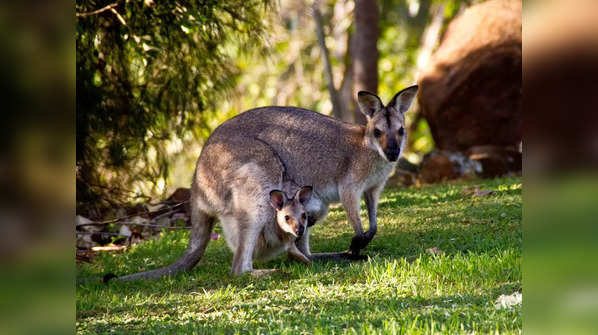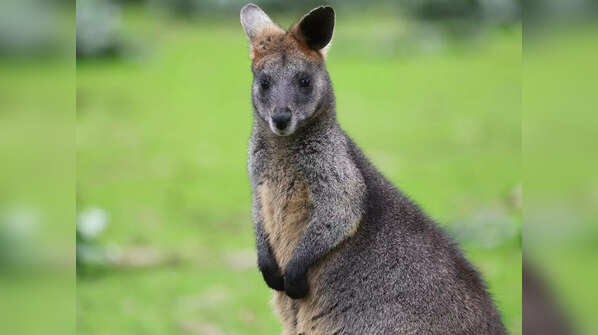The Swamp Wallaby: The only animal that remains pregnant its whole life

The fascinating swamp wallaby
The swamp wallaby, also known as the black wallaby or the black stinker, is a small marsupial native to eastern Australia. It belongs to the same family as kangaroos and wallabies, but has some unique features that set it apart from its relatives. One of these features is its remarkable reproductive system, which allows it to remain pregnant its whole life.
Image: Canva

How does it work?
The swamp wallaby has a complex reproductive cycle that involves two uteri and two ovaries. Unlike most mammals, the swamp wallaby does not have a regular estrous cycle, but instead ovulates every 28 days regardless of whether it is pregnant or not. This means that it can conceive a new embryo while still carrying another one in its pouch.
The swamp wallaby’s pregnancy lasts for about 38 days, after which it gives birth to a tiny, hairless, and blind joey that weighs only about one gram. The joey then crawls into its mother’s pouch and attaches itself to one of the four teats. The mother produces two types of milk: one for the newborn joey and one for the older joey that may still be in the pouch. The newborn joey stays in the pouch for about nine months, while the older joey leaves the pouch after about 10 months, but continues to suckle until it is 15 months old.
The swamp wallaby can mate again as soon as one day after giving birth, and conceive a new embryo that will remain dormant in the second uterus until the previous joey leaves the pouch. This process is called embryonic diapause, and it allows the swamp wallaby to have a continuous supply of offspring throughout its life. The swamp wallaby can produce up to 50 joeys in its lifetime, which can span up to 15 years.
Image: Canva

Why does it do it?
The swamp wallaby’s reproductive strategy is an adaptation to its unpredictable and harsh environment. The swamp wallaby lives in dense forests, swamps, and grasslands, where it faces threats from predators, fires, floods, and droughts. By having a constant pregnancy, the swamp wallaby can ensure that it always has a backup offspring in case the current one dies or is lost. It can also adjust the timing of its births to suit the availability of food and water.
The swamp wallaby’s reproductive system also gives it an evolutionary advantage over its competitors. The swamp wallaby can breed faster and more frequently than other marsupials, and thus increase its population size and genetic diversity. It can also exploit new habitats and resources that may become available due to environmental changes.
Image: Canva

What are the implications?
The swamp wallaby’s reproductive system is a fascinating example of how nature can create diverse and complex solutions to the challenges of survival and reproduction. It also raises some interesting questions and implications for conservation and management. For instance, how does the swamp wallaby’s reproductive system affect its population dynamics and ecology? How does it cope with diseases and parasites that may affect its reproductive organs? How does it respond to human-induced threats such as habitat loss, fragmentation, and climate change? These are some of the topics that researchers are currently investigating to better understand and protect this unique and remarkable animal.
Image: Canva

The Swamp Wallaby’s conservation status: How is it doing?
The swamp wallaby is currently listed as a species of least concern by the International Union for Conservation of Nature (IUCN), meaning that it is not threatened with extinction. However, it still faces some challenges and threats in its natural range. Some of these include habitat degradation and fragmentation, predation by introduced species such as foxes and cats, competition with livestock and other herbivores, illegal hunting and poaching, and climate change. The swamp wallaby is also considered a pest by some farmers and landowners, who may shoot or poison it to protect their crops and livestock. The swamp wallaby needs adequate protection and management to ensure its long-term survival and well-being.
Image: Canva









